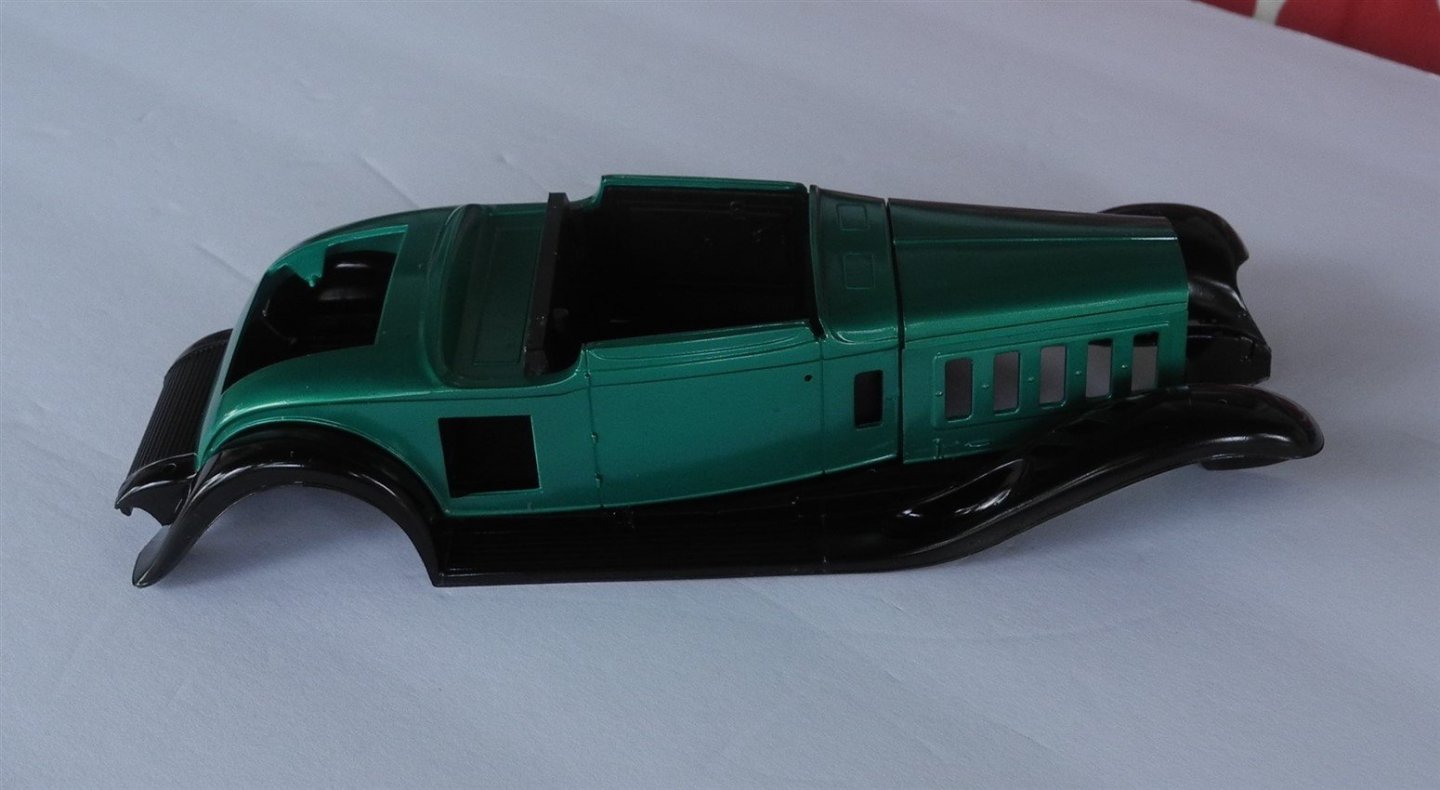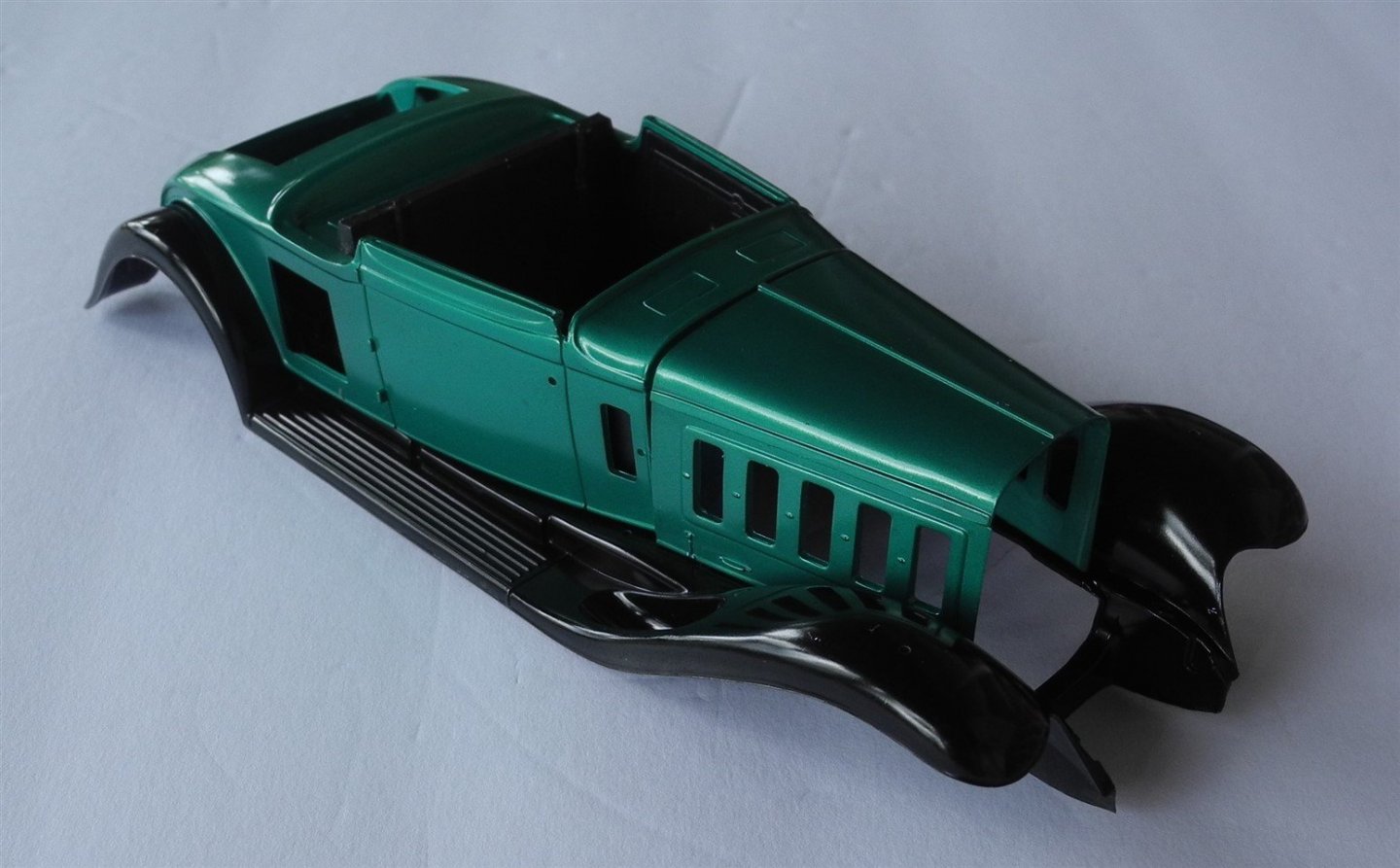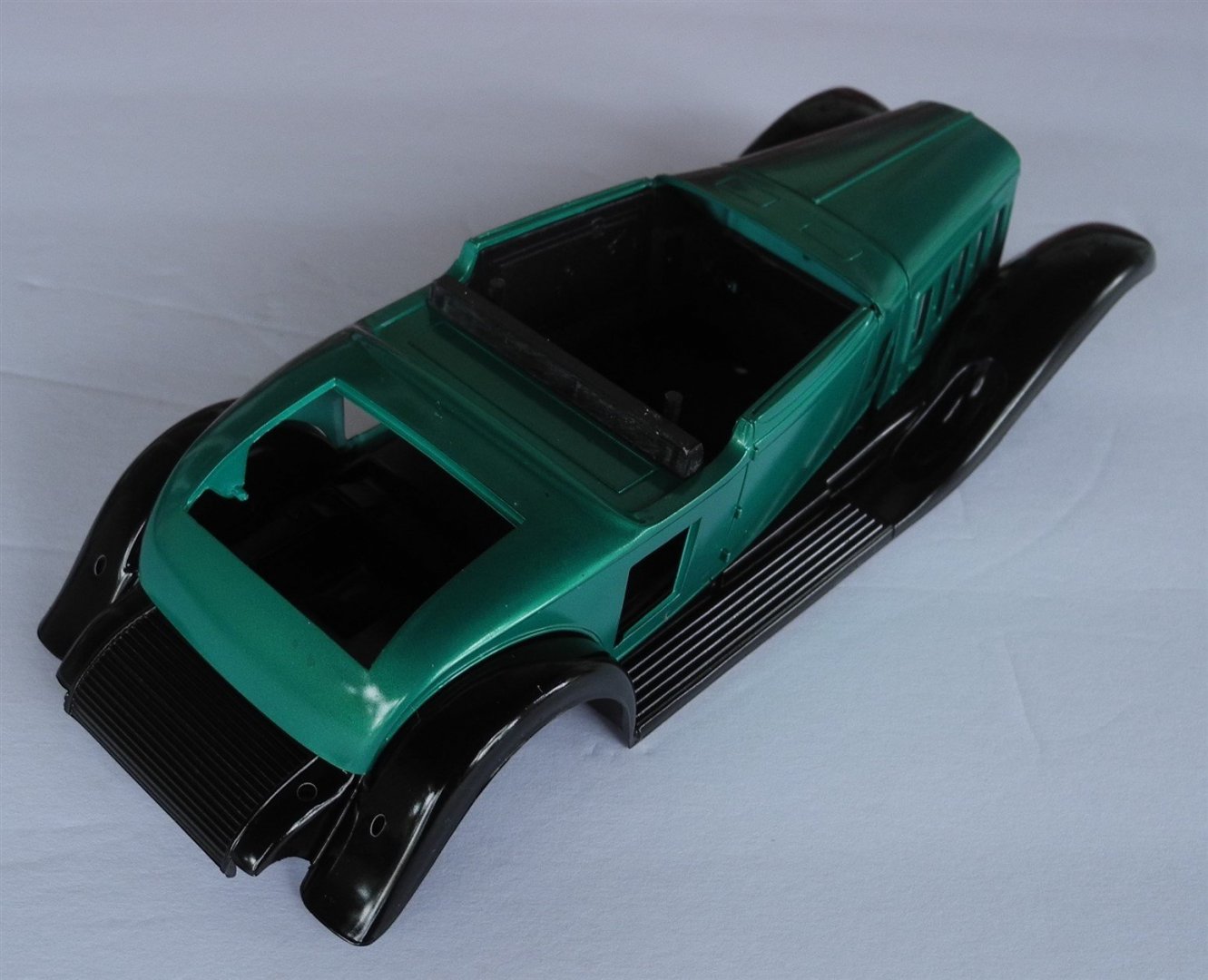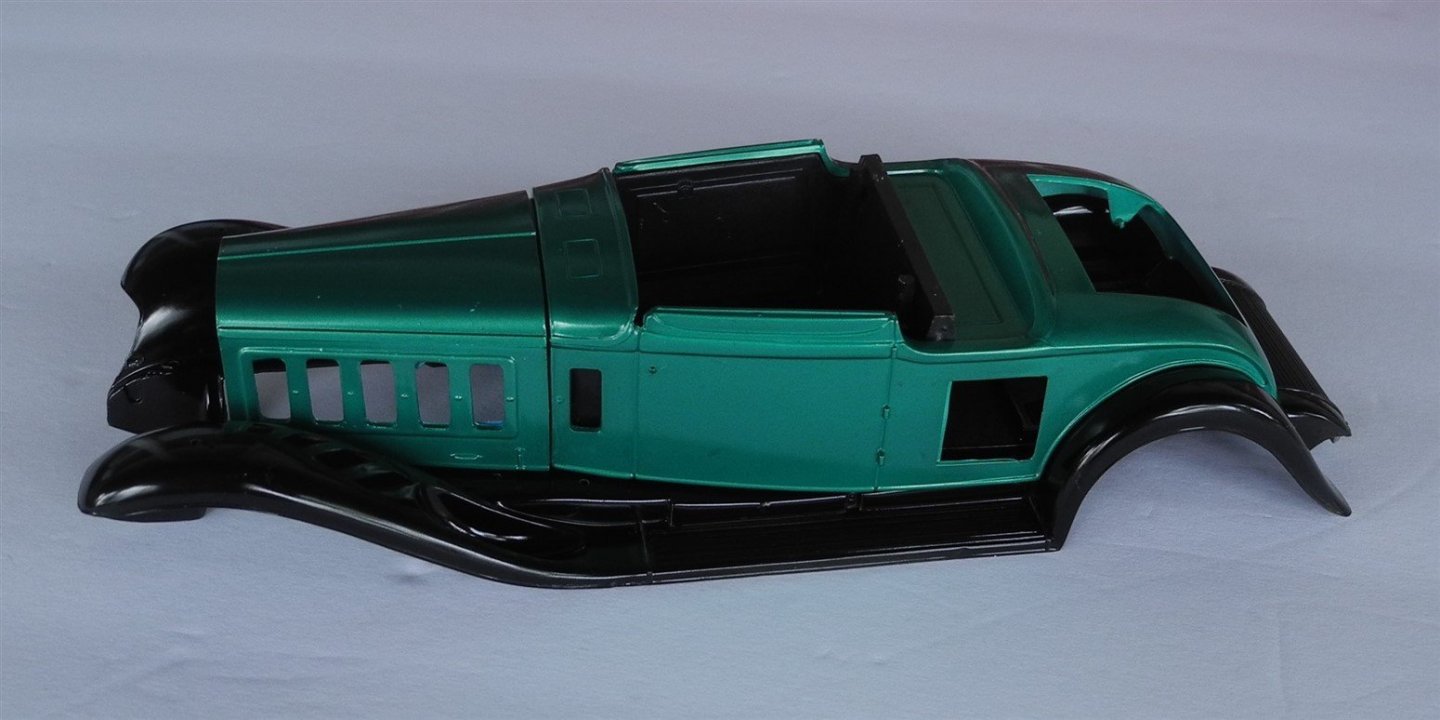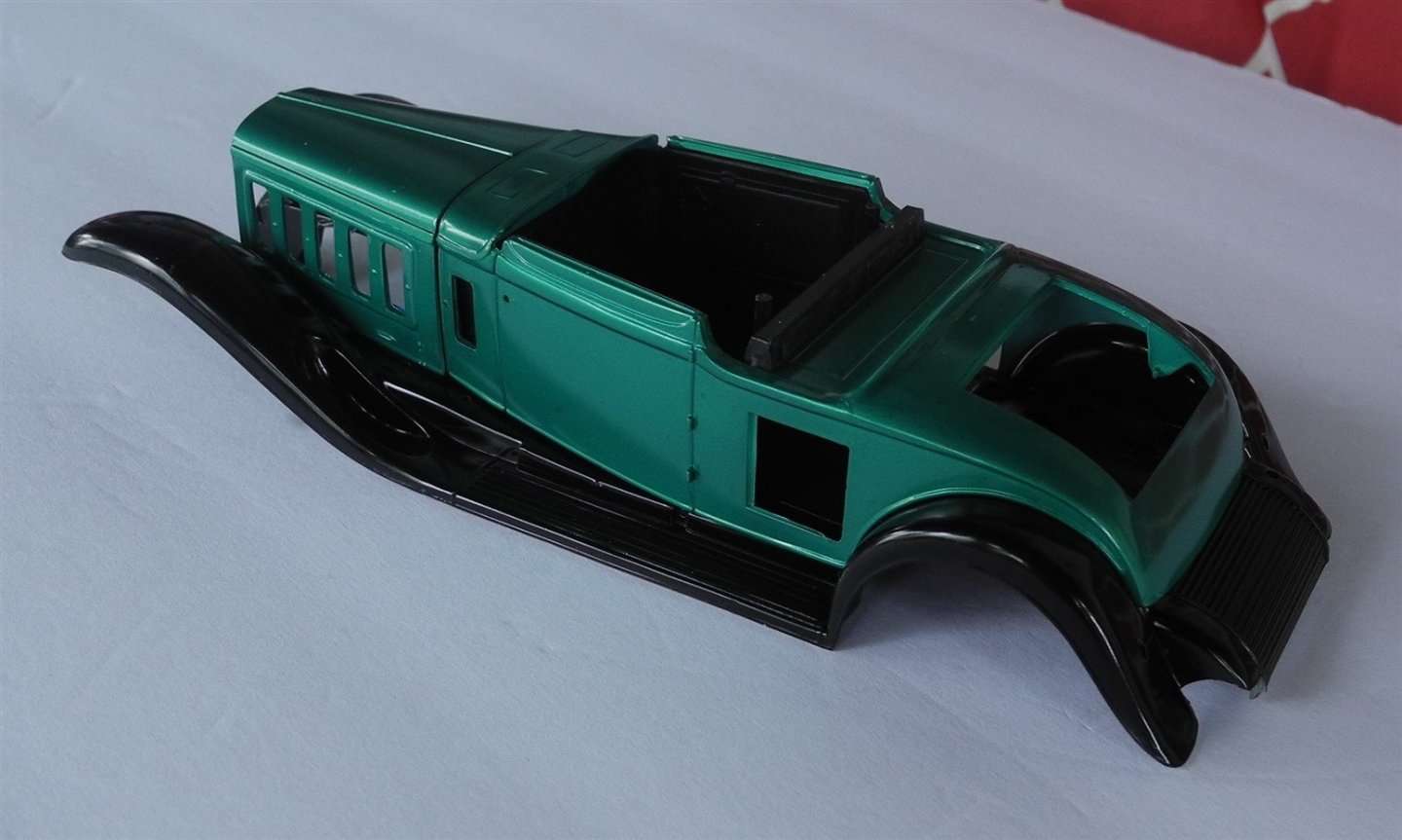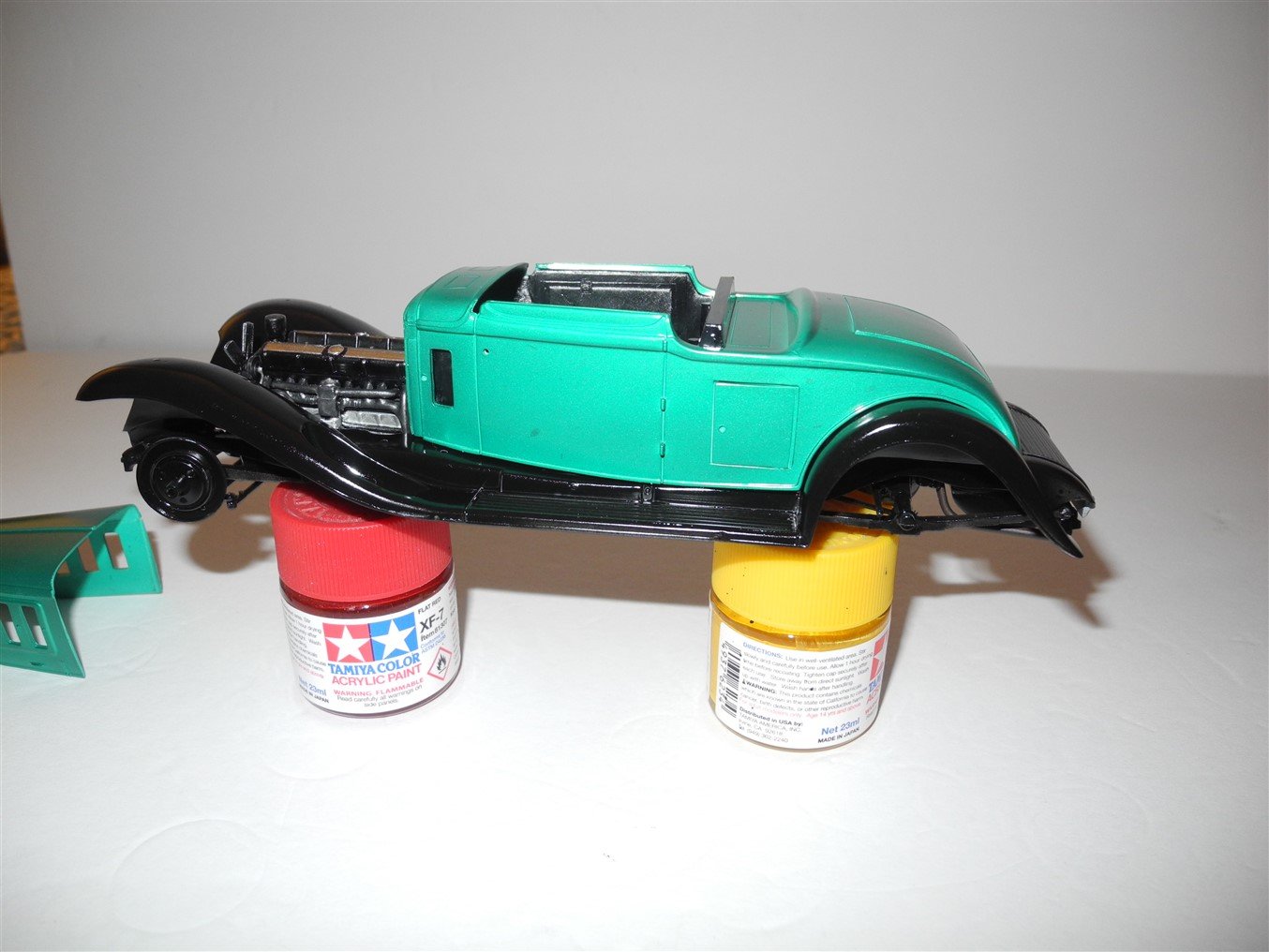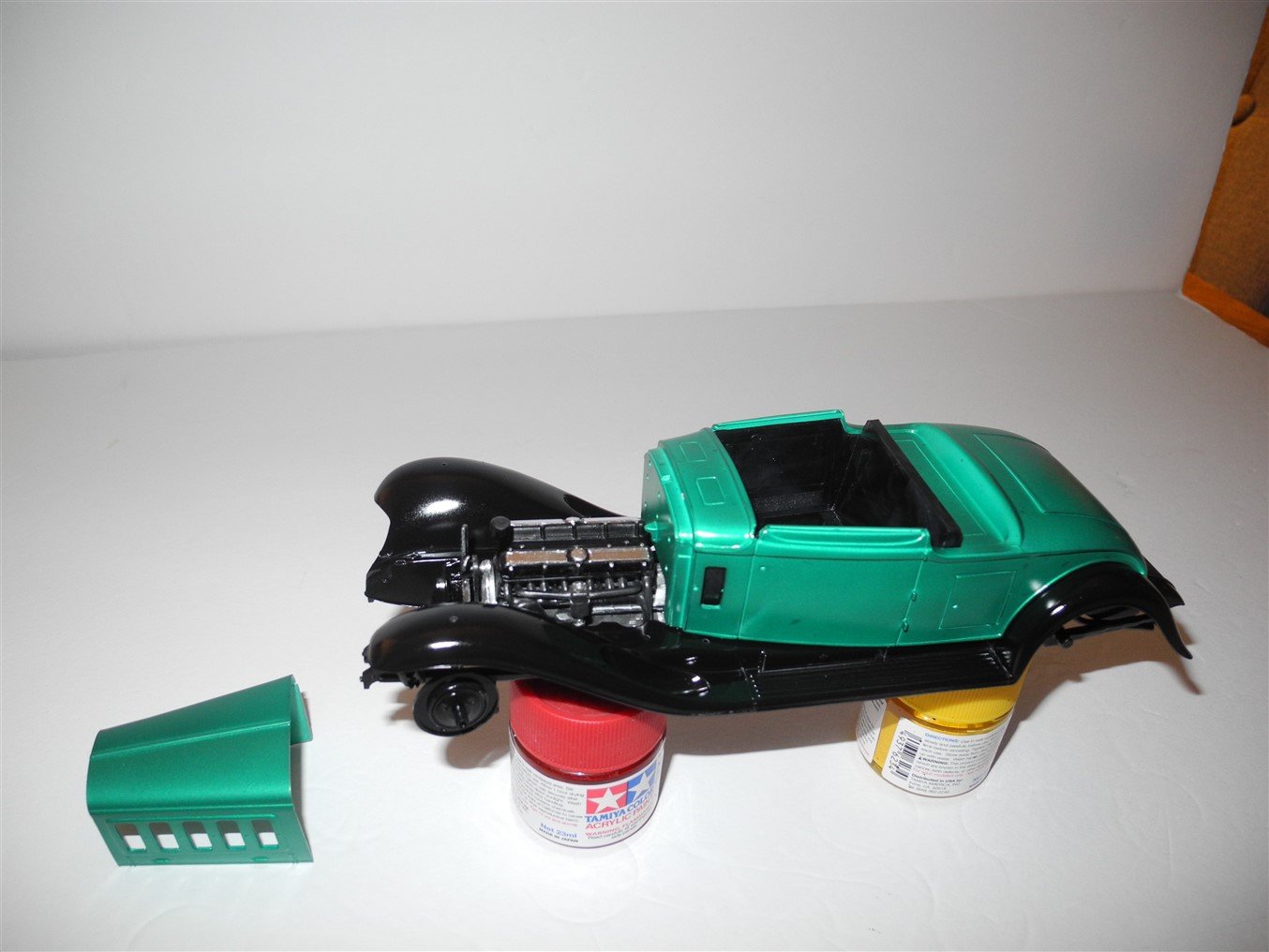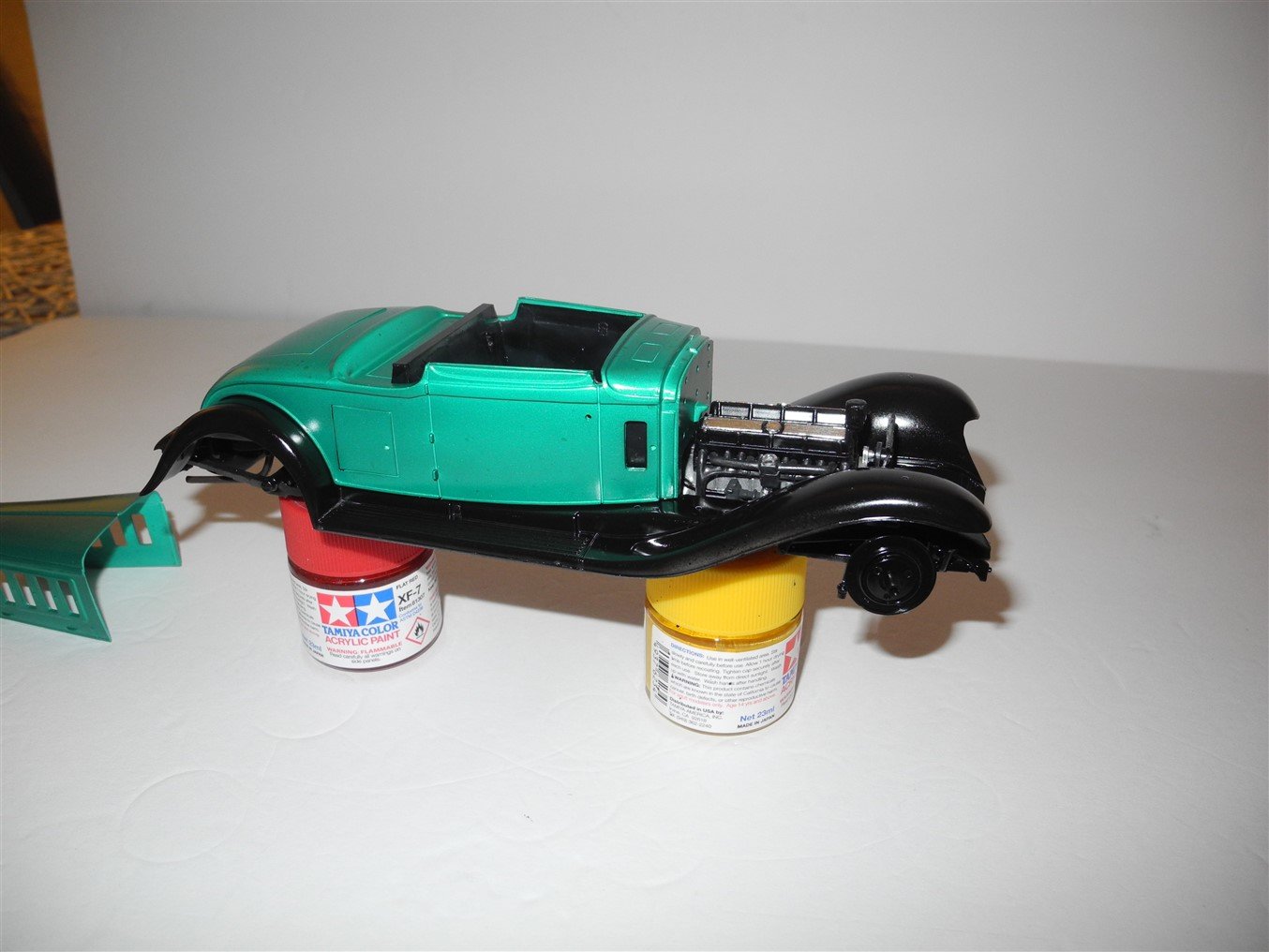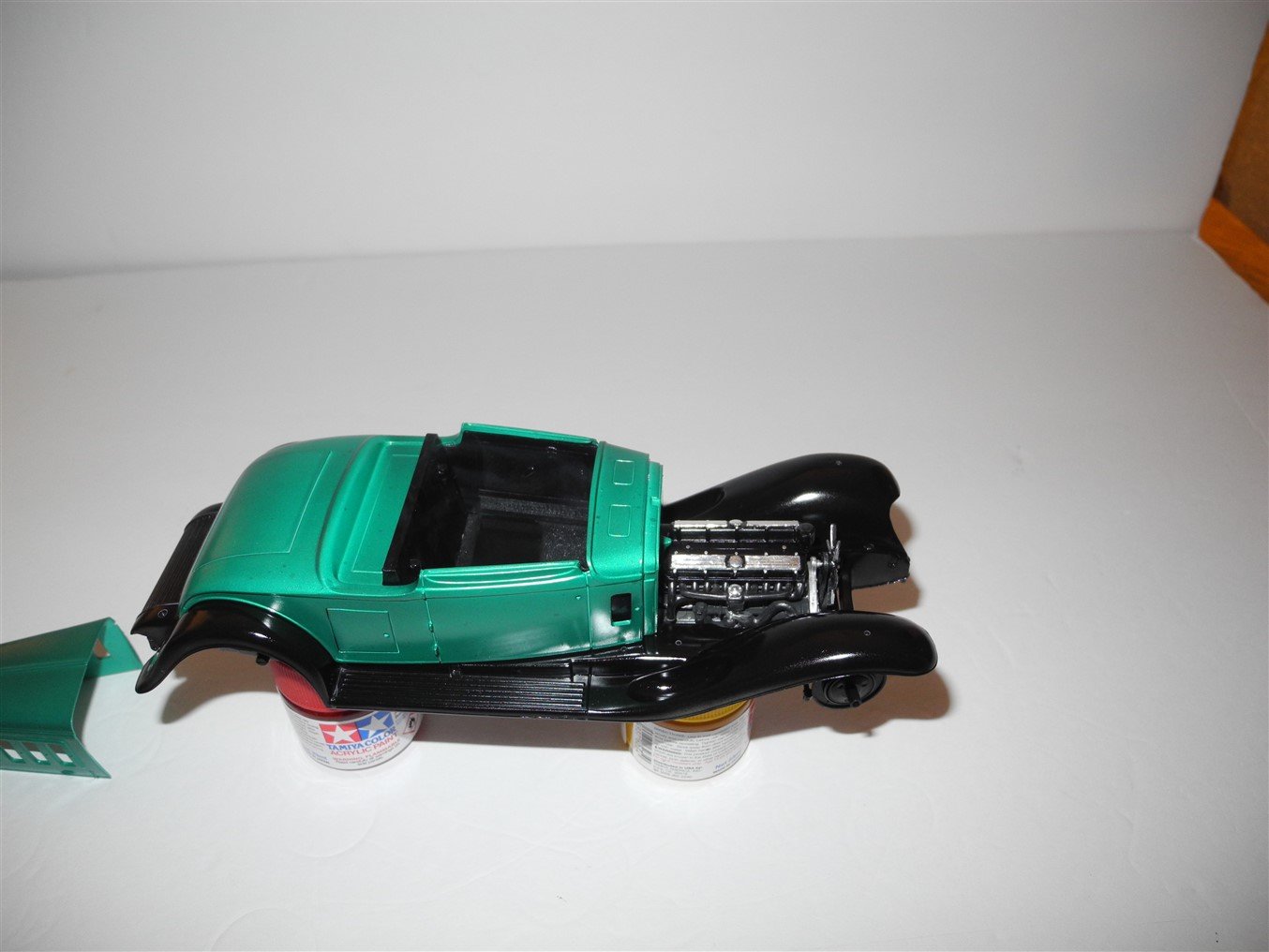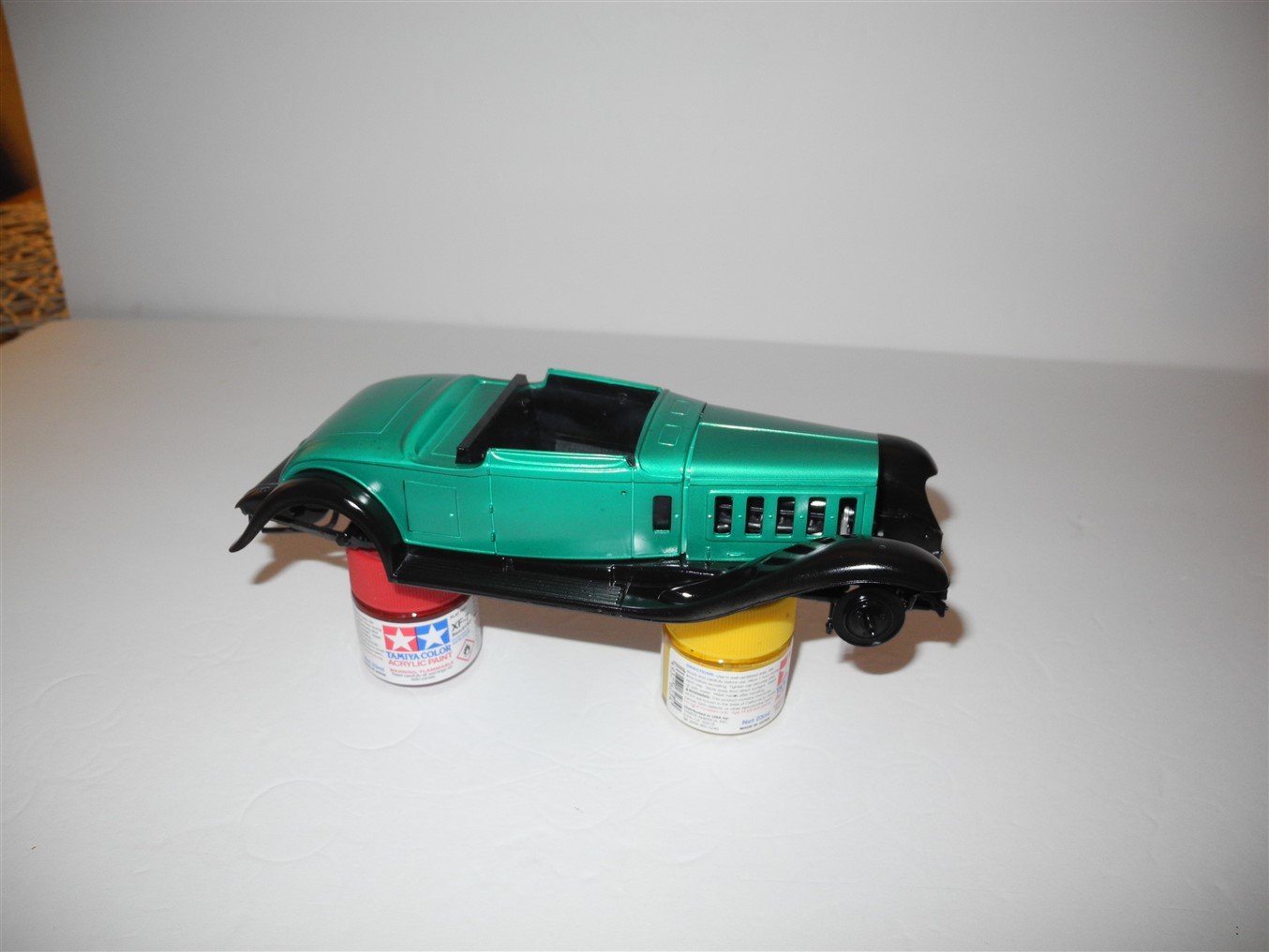-
Posts
7,747 -
Joined
-
Last visited
Content Type
Profiles
Forums
Gallery
Events
Everything posted by CDW
-

1931 Cadillac by CDW - FINISHED - JoHan - 1:25 Scale - PLASTIC
CDW replied to CDW's topic in Non-ship/categorised builds
And a lot depends on how well cured the paint. Well cured paint is much more resistant to removal vs: freshly painted plastic. If I screw up a paint job and strip it within a few days after laying down the paint, it comes off with relative ease. Old models that have been painted for years can take days (soaking) to strip the paint. As you mentioned alcohol will remove Tamiya paint for sure. -

1931 Cadillac by CDW - FINISHED - JoHan - 1:25 Scale - PLASTIC
CDW replied to CDW's topic in Non-ship/categorised builds
Thanks Kevin. I first used several coats of Tamiya white primer thinned with Mr. Color leveling thinner at a ratio of 1 part primer to 3 parts thinner, wet sanding between coats. Then the color, then the clear coat. Clear coat gets mixed in a ratio similar to the primer, 1 part paint to 3 parts thinner. -

1931 Cadillac by CDW - FINISHED - JoHan - 1:25 Scale - PLASTIC
CDW replied to CDW's topic in Non-ship/categorised builds
Maybe one of us should test whether liquid chlorine might work safely on chromed plastic. I always have liquid chlorine on hand for our swimming pool. Over the next few days, will make it a point to try that on some scrap chrome pieces to test it out. Liquid chlorine is an undiluted version of bleach but one has to be extra careful with it as it can create quite strong fumes. -

1931 Cadillac by CDW - FINISHED - JoHan - 1:25 Scale - PLASTIC
CDW replied to CDW's topic in Non-ship/categorised builds
Nick I use a product called "Super Clean" to strip chrome parts. In the USA, it can be found in the automotive section of WalMart stores, sold in one gallon containers. Super Clean is a cleaner/degreaser and I believe it is citrus based. I don't know whether this product or an equivalent is available in Europe. When I am doing small chrome parts and not using an airbrush, I use a Molotow chrome marking pen. They come in 1mm, 2mm, and 4mm tip sizes. Makes a very nice chrome finish and the pen makes it very convenient. For larger parts, there are various spray cans of chrome paint that do a decent finish. https://www.amazon.com/Molotow-Liquid-Chrome-Marker-Set/dp/B074JJ1YMY -

1931 Cadillac by CDW - FINISHED - JoHan - 1:25 Scale - PLASTIC
CDW replied to CDW's topic in Non-ship/categorised builds
Next will begin working on the interior. I have some photo etch door handles and window cranks, as well as photo etch and printed instruments/instrument cluster panels. These should be far better than the molded on details which are rather soft on detail. To show it all off, will probably use the top down feature rather than top up. In the meantime, will begin stripping all the chrome from all the detail parts and begin the task of painting them. -

1931 Cadillac by CDW - FINISHED - JoHan - 1:25 Scale - PLASTIC
CDW replied to CDW's topic in Non-ship/categorised builds
Thanks Edward. Outdoor lighting gives a much better rendition of the actual color of the model. When I went to mix my clear coat system, I found out my bottle of hardener had actually solidified completely, making it unusable. Now I know this stuff has a shelf life. I had used the 2K clear coat system on a few different models over the course of the past year, but by now, it had perished. In lieu of the 2K clear coat system, I used Mr Color gloss clear for the clear coat finish observed on the model as it stands now. -

1931 Cadillac by CDW - FINISHED - JoHan - 1:25 Scale - PLASTIC
CDW replied to CDW's topic in Non-ship/categorised builds
Thanks OC. It's somewhat washed out due to using the camera flash mode. The photos were taken late in the afternoon while the sky was very cloudy. As a result, there was little to no natural light. In natural light, the color is a little darker, more like a light metallic emerald green. -

1931 Cadillac by CDW - FINISHED - JoHan - 1:25 Scale - PLASTIC
CDW replied to CDW's topic in Non-ship/categorised builds
I finally put some paint on this thing. Almost all chrome will be stripped away then repainted with a chrome finish. Just not too thrilled with the kit chrome. Down side is, stripping and repainting all the little chrome parts will be time consuming. Hopefully it will pay off at the end. -
Hi Jack Love your modeling subject, the M4A3 Sherman. I recently picked up a copy of the M-50 Isherman, an Israeli adaptation of the venerable Sherman chassis that served well during early middle eastern conflicts in the 1960's. Back some years ago when we had a strong local IPMS modeling club, a number of por members were huge armor fans, and I always enjoyed seeing their amazing work with WW2 armor. The Sherman was always a favorite modeling subject due to the many significant variations it took on during WW2. Here is a good, short, 5 minute video of the various Sherman tanks to serve in WW2.
-
Long ago, I made the mistake of using it as a degreaser on a 1:1 automobile engine bay. In addition to degreasing the engine it stripped the paint. Not advisable to let it contact any polished aluminum parts as it mars the finish. A very potent product but it's supposed to be environmentally friendly.
-

SBD-3 Dauntless 1:48 Hasegawa - Edwardkenway-FINISHED
CDW replied to Edwardkenway's topic in Non-ship/categorised builds
OC Trumpeter does the Bear in 1:72, but the kit is a pig. It can be done to look quite well, but it takes a lot of work to get it there. Poorly fitting and lacks important detail. Then there is an old DML kit of it in 1:144. Don't know how good or bad that kit might be. Do a Youtube search for Flory Models where he does the 1:72 Trumpeter kit. His video might be there. I have seen it on his paid subscriber site, but it may be available for free on YT. -

SBD-3 Dauntless 1:48 Hasegawa - Edwardkenway-FINISHED
CDW replied to Edwardkenway's topic in Non-ship/categorised builds
Congratulations Edward. Your Dauntless came out beautiful. You did quite a nice work after 40 years of non participation. You caught on quickly. -

1931 Cadillac by CDW - FINISHED - JoHan - 1:25 Scale - PLASTIC
CDW replied to CDW's topic in Non-ship/categorised builds
Lol - yep, it's all the same game. Gotta be careful with this gloss coat, it's not user friendly. But it is a mighty fine gloss clear coat, just stinks to high heaven. -

1931 Cadillac by CDW - FINISHED - JoHan - 1:25 Scale - PLASTIC
CDW replied to CDW's topic in Non-ship/categorised builds
Thanks OC. I seem to be having more difficulty concentrating on model building for all the news that's going on right now. Hard to do both things at once. -

1931 Cadillac by CDW - FINISHED - JoHan - 1:25 Scale - PLASTIC
CDW replied to CDW's topic in Non-ship/categorised builds
Thanks for the likes and comments. The frame is painted with Tamiya X-1, the exhaust pipes with AK burnt metal, the mufflers and leaf springs with AK gun metal. -

1931 Cadillac by CDW - FINISHED - JoHan - 1:25 Scale - PLASTIC
CDW replied to CDW's topic in Non-ship/categorised builds
Thanks Edward. Hope you and your family are doing well during this time of chaos. -

1931 Cadillac by CDW - FINISHED - JoHan - 1:25 Scale - PLASTIC
CDW replied to CDW's topic in Non-ship/categorised builds
-

Curtiss P-40B Warhawk by Asat- Airfix- 1/48
CDW replied to ASAT's topic in Non-ship/categorised builds
There is at least one great youtube build video for the 1:24 Airfix Typhoon. Maybe more, but I watched most of the one, a great video.
About us
Modelshipworld - Advancing Ship Modeling through Research
SSL Secured
Your security is important for us so this Website is SSL-Secured
NRG Mailing Address
Nautical Research Guild
237 South Lincoln Street
Westmont IL, 60559-1917
Model Ship World ® and the MSW logo are Registered Trademarks, and belong to the Nautical Research Guild (United States Patent and Trademark Office: No. 6,929,264 & No. 6,929,274, registered Dec. 20, 2022)
Helpful Links
About the NRG
If you enjoy building ship models that are historically accurate as well as beautiful, then The Nautical Research Guild (NRG) is just right for you.
The Guild is a non-profit educational organization whose mission is to “Advance Ship Modeling Through Research”. We provide support to our members in their efforts to raise the quality of their model ships.
The Nautical Research Guild has published our world-renowned quarterly magazine, The Nautical Research Journal, since 1955. The pages of the Journal are full of articles by accomplished ship modelers who show you how they create those exquisite details on their models, and by maritime historians who show you the correct details to build. The Journal is available in both print and digital editions. Go to the NRG web site (www.thenrg.org) to download a complimentary digital copy of the Journal. The NRG also publishes plan sets, books and compilations of back issues of the Journal and the former Ships in Scale and Model Ship Builder magazines.

.jpg.7e80607770d9078b2f0b470e8c9c33ac.jpg)

